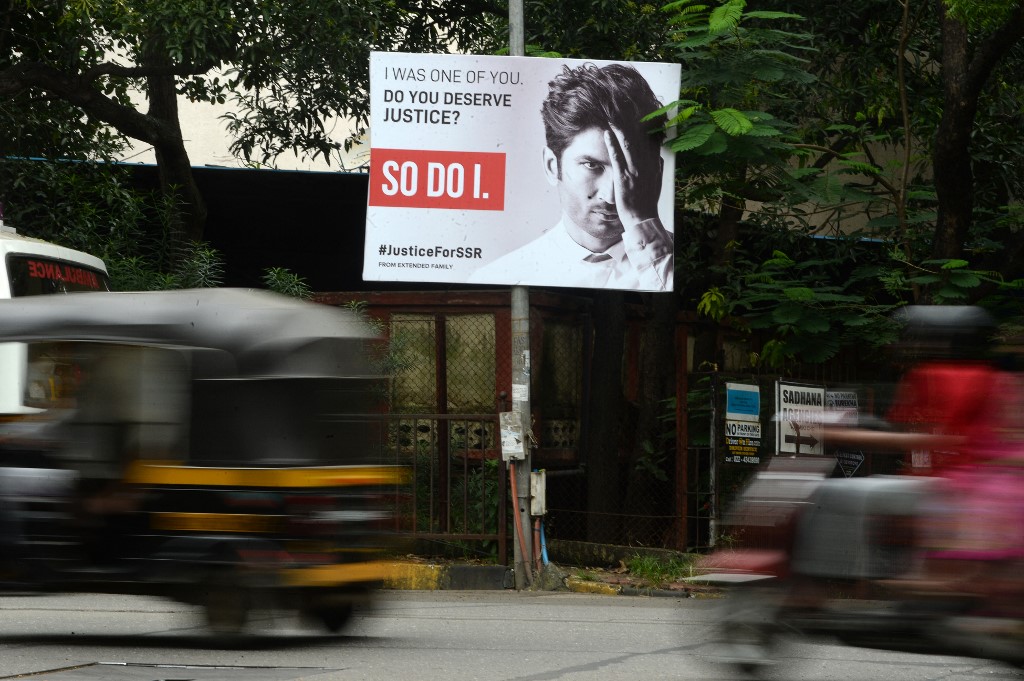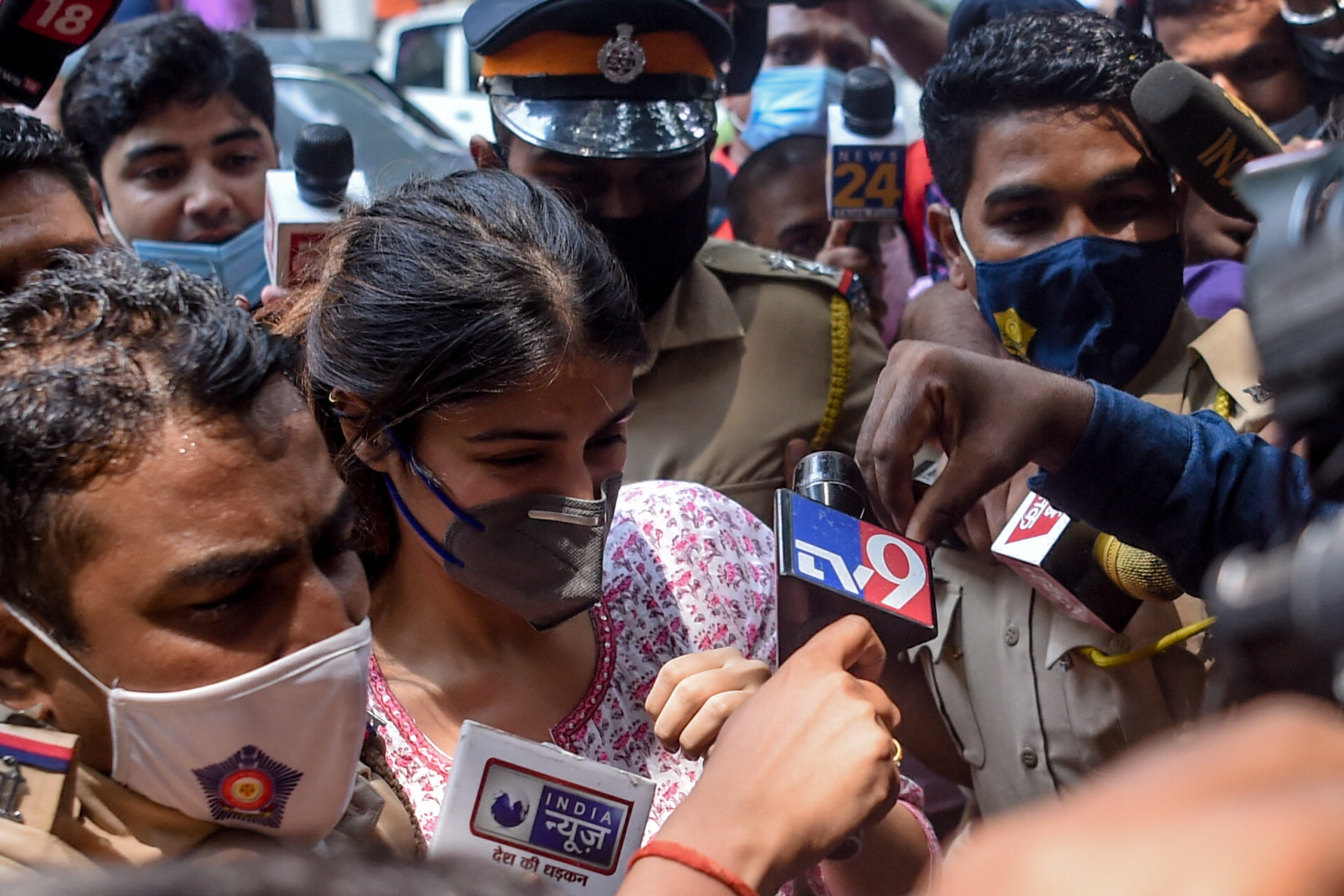How a Bollywood Actor’s Death Spawned a QAnon-Style Conspiracy Movement
February 26, 2021Prashant Kumar says he was horrified when he first heard that his favourite Bollywood actor Sushant Singh Rajput had been found dead at his residence in Mumbai last June. In the days after, Kumar, who hails from the late actor’s hometown, started a Facebook group dedicated to the pursuit of justice for Singh Rajput, popularly known as SSR. Because like many thousands of SSR fans, Kumar believes the authorities are involved in a cover-up and the actor did not die by suicide.
“I wanted to wake people up with my Facebook group,” Kumar told VICE World News. “Justice for me is the death of all of SSR’s assassinators.”
Between July 2020 to this February, the hashtag #JusticeForSSR has received more than 65 million active interactions, according to data from Crowdtangle.
In many ways the twisting narratives around SSR’s death mirror those around QAnon in the US. Every detail of the actor’s passing is picked over and reframed to fit the conspiracy, starting with the coincidental death of SSR’s manager, Disha Salian, who reportedly died by suicide two days before his client. Many believe SSR was murdered because he knew the truth about Salian’s demise.
Yet others are propagating a theory that says Singh Rajput’s death was live-streamed on the dark web for bitcoin; and that he was beaten up with a cricket bat and strangled with his dog’s collar.
According to yet another theory, Singh Rajput was trying to expose a massive pedophile ring operated by Bollywood celebrities and politicians.
“There are many reasons [for why I think it wasn’t suicide],” New Delhi-based Chandan Singh, an engineer and part of the #JusticeForSSR campaign, told VICE World News. “The ligature mark isn’t that of a suicide, the ceiling height wasn’t tall enough for Sushant to hang from, and his room keys were missing.”
Singh is also part of a campaign that tweets daily tag-lines, such as “we love Sushant Singh Rajput”, on Twitter and capitalises on trending hashtags. “We are connected through digital platforms, as this originated during COVID. We coordinate through Twitter groups, but many of the fans and his friends have held on-ground campaigns as well,” said Singh.

When asked about who comes up with these tag-lines, another Twitter user named Kiran, who did not reveal her last name, age or profession, said they were prompted by Singh Rajput’s family members. “I’m not sure how they were chosen, but from what I know, it’s a family friend and a team that decides the daily tag-lines. I don't think they were chosen on Twitter, but it is communicated to us through a Twitter post,” she said.
Currently, the Mumbai police is investigating claims that that Singh Rajput’s sister suppled him prescription medication via forgery.
Last October, Mumbai police also released a report which identified more than 80,000 bots created to discredit the investigation into Singh Rajput’s death. These accounts were reportedly identified through their use of hashtags like #justiceforsushant #sushantsinghrajput, and #SSR.
A study conducted by University of Michigan researchers, titled Anatomy of a Rumour: Social media and the suicide of Sushant Singh Rajput, indicated that certain media channels and members of India’s ruling Bharatiya Janata Party were involved in spreading conspiracy theories claiming that the actor was murdered.
Critics say that the government created bots to divert attention from India’s mishandling of the pandemic and economic crisis.
“The narrative [of murder over suicide] came about because the Maharashtra state government and Mumbai police mishandled the post mortem, forensic reports, and other aspects, which shows they were trying to protect something,” Gopal Agarwal, a spokesperson for the BJP — whose tweets were used as data in the University of Michigan study — told VICE World News. “If you don’t have a valid cause to doubt the investigation in this so-called suicide, nothing can come out of it.”
While the late actor’s death first kick-started conversations around mental health and nepotism in the Indian film industry, it soon evolved into a movement that floated conspiracy theories, originating over WhatsApp, Twitter and Facebook groups.
YouTube videos discussing these theories gained massive traction. Most of the narratives were taken from social media, and then spread across YouTube.
Some of these theories were also picked up by mainstream news channels. Vibhor Anand, a man who was arrested for spreading misinformation around the SSR case, claimed he was influenced by the Republic news channel.
Ujjawal Trivedi is a former Bollywood journalist who now runs a YouTube channel with more than 400,000 subscribers. Trivedi credits theories around SSR’s death for raising his online popularity. “My page only had about 8,000 subscribers before I began discussing SSR theories,” he told VICE World News.
According to Trivedi, misinformation around the late actor’s death originates from news channels, ultimately proliferating through social media. “On my YouTube channel and Facebook page, I discuss the theories I see on news channels, or based on conversations with Sushant’s friends.”
“There's an emerging feeling that like all conspiracy theory movements, this one too is targeted towards pushing people to question authorities and institutions, ranging from medical authorities to the state government to the judiciary, and Bollywood,” Venkat Ananth, a tech journalist who tracked the conspiracy movement surrounding SSR’s death last September, told VICE World News.
Pointing out that much of the information around SSR’s death came from social media, Ananth added that these conspiracy theorists did not stick to any single narrative, and kept changing. “The common thread that links them [conspiracy theorists] is a sense of collective anxiety and injustice. This is what makes conspiracy groups vulnerable to brainwashing, and increases the need for someone, possibly from their own families or elsewhere, to de-programme them.”
Some continue to blame the late actor’s girlfriend, Rhea Chakraborty, for his death. After Singh Rajput’s father filed a police report against Chakraborty in July 2020, accusing her of “financially and mentally exploiting” the late actor, fans were convinced that Chakraborty was involved in his death. Sections of media villainised Chakraborty by airing the late actor’s leaked WhatsApp conversations with her.

A video of Chakraborty allegedly saying she could “easily control” Rajput went viral on social media in July 2020, which only pushed more SSR fans to believe that she was responsible for his death.
In November 2020, the Bombay High Court ruled that the media trial was an obstruction of justice.
Soon after the aggressive campaign for justice and a long-winded media trial, India’s federal agency, Central Bureau of Investigation, took over the investigation. However, experts are concerned that no single verdict or investigation is enough to satisfy the massive movement that generates new theories almost every day.
“The Justice for SSR movement represents a larger pattern emerging in the Indian society, where conspiratorial thinking is becoming mainstream,” said Ananth. “This not only hints that there is a percentage of users on social media platforms, that are directly vulnerable to indoctrination, but also represents how bad our information ecosystem is.”
Additional reporting by Snigdha Bansal
